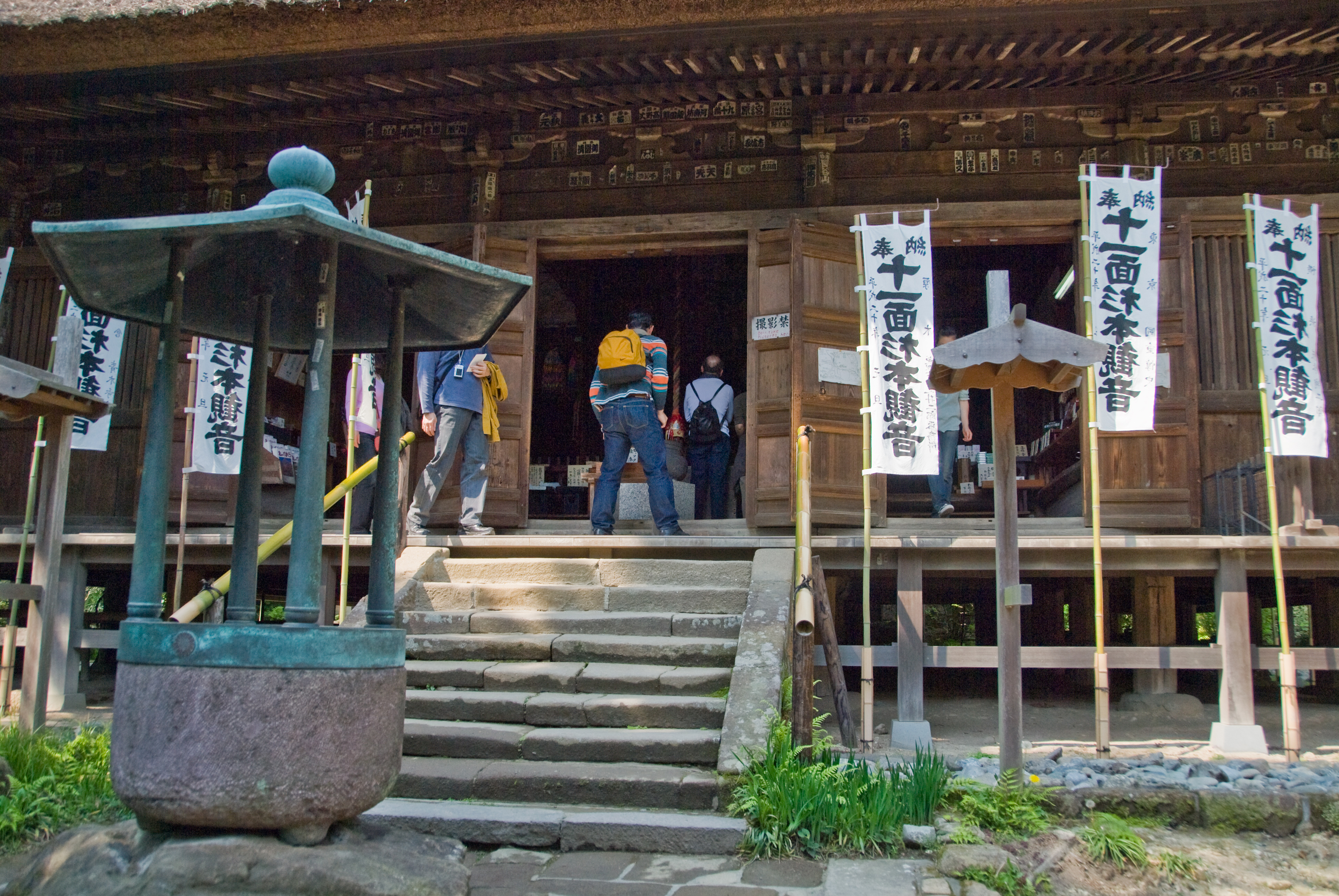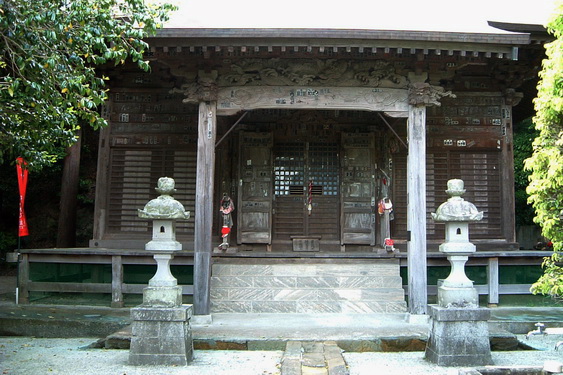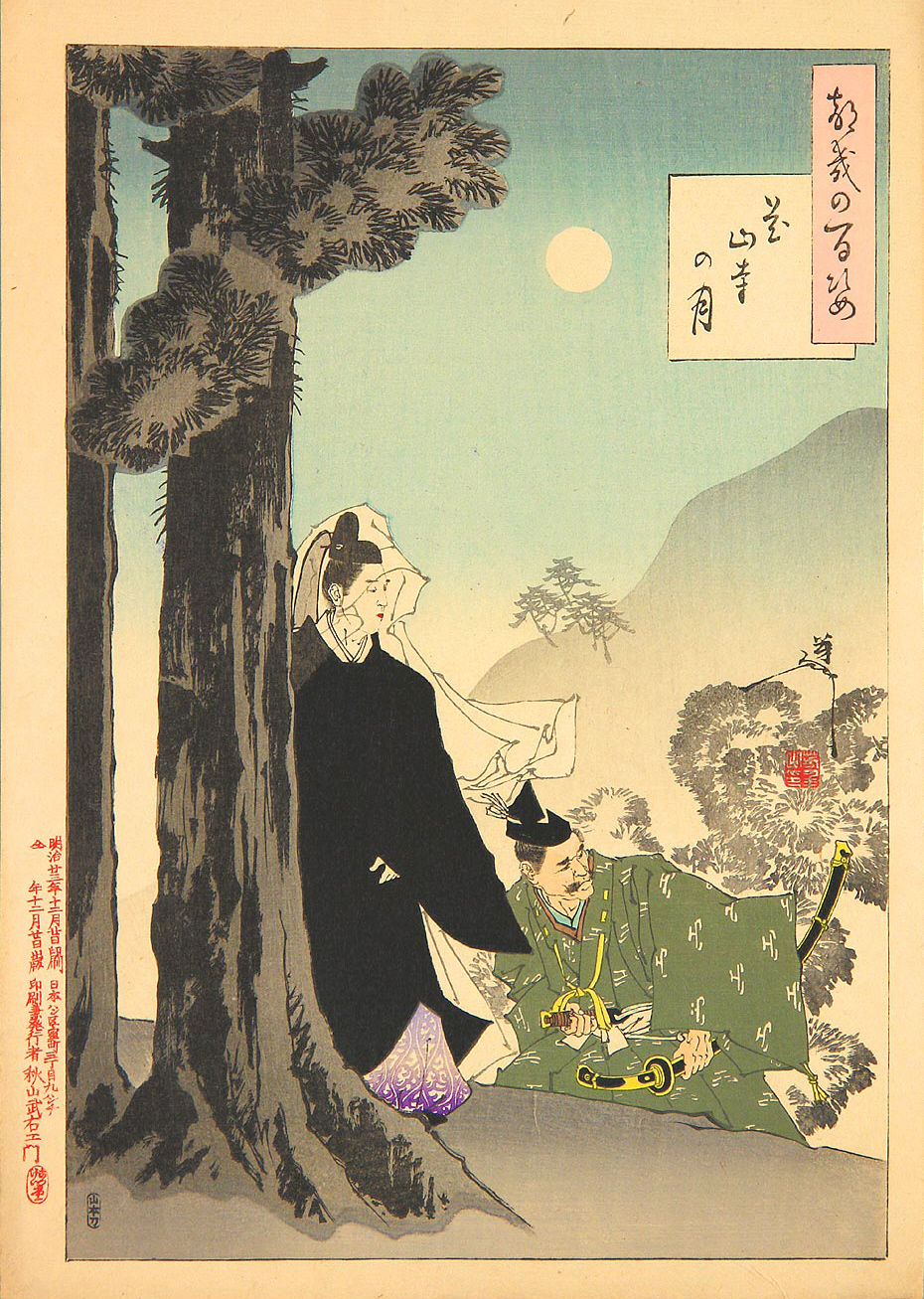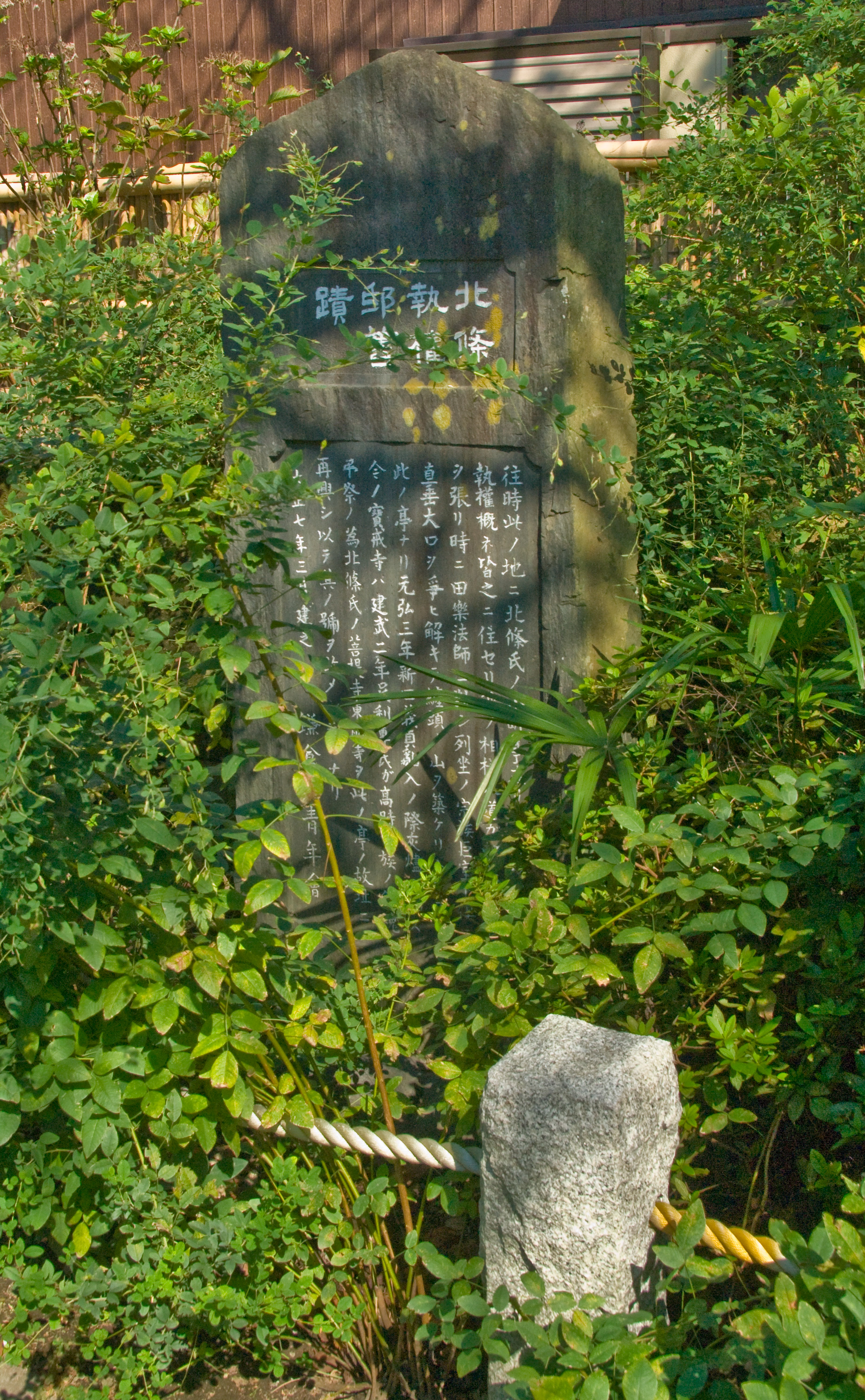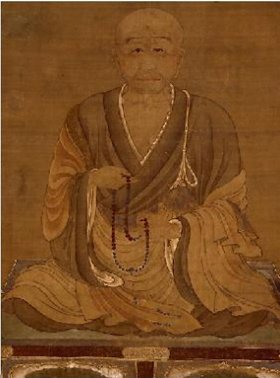|
Sugimoto-dera
is a Buddhist temple in Kamakura, Kanagawa Prefecture, Japan, one of the oldest temples in Kamakura and, together with Hōkai-ji, the only one of the Tendai denomination.Kamiya Vol. 1 (2008:75) The temple is Number one of the Bandō Sanjūsankasho pilgrimage circuit. Two of the three statues of goddess Kannon it enshrines are Important Cultural Properties. Sugimotodera is nicknamed ''Geba Kannon'' ("Dismount Kannon"), because horsemen never failed to dismount from their steeds when they passed by. (According to a different version of the legend, non-believers always fell from their horse when passing in front of the temple.) The temple is a of Hōkai-ji. History According to the temple's own records, Sugimoto-dera was founded in 734 by the minister of the Imperial Court Fujiwara no Fusasaki (681 – 737) and priest Gyōki on orders by Emperor Shōmu. The temple's legend holds that Empress Komyo (701–760) in the Nara Period (710–794) instructed Fujiwara and Gyoki (6 ... [...More Info...] [...Related Items...] OR: [Wikipedia] [Google] [Baidu] |
Bandō Sanjūsankasho
The ("The Bandō 33 Kannon Pilgrimage") is a series of 33 Buddhist temples in Eastern Japan sacred to Goddess Kannon. Bandō is the old name for what is now the Kantō region,Donald Richie used in this case because the temples are all in the Prefectures of Kanagawa, Saitama, Tokyo, Gunma, Ibaraki, Tochigi and Chiba. As is the case with all such circuits, each location has a rank, and pilgrims believe that visiting them all in order is an act of great religious merit. Started by Minamoto no Yoritomo and his son Sanetomo, the Bandō Sanjūsankasho is just one of 70 different Kannon pilgrimage circuits existing in Japan, each including 33 temples because the Goddess is believed to have 33 different manifestations. Sugimoto-dera in Kamakura is number one, Zushi's Gandenji's is number two, An'yō-in in Kamakura is the number three, the famous Hasedera in Hase number four, and so on. From its beginning at Sugimotodera to its end in Chiba's Nagodera, the circuit is over 1300 ... [...More Info...] [...Related Items...] OR: [Wikipedia] [Google] [Baidu] |
Kamakura, Kanagawa
is a city in Kanagawa Prefecture, Japan. Kamakura has an estimated population of 172,929 (1 September 2020) and a population density of 4,359 persons per km² over the total area of . Kamakura was designated as a city on 3 November 1939. Kamakura was the ''de facto'' capital of Japan from 1185 to 1333 as the seat of the Kamakura Shogunate, and became the nation's most populous settlement during the Kamakura period. Kamakura is a popular domestic tourist destination in Japan as a coastal city with a high number of seasonal festivals, as well as ancient Buddhist and Shinto shrines and temples. Geography Surrounded to the north, east, and west by hills and to the south by the open water of Sagami Bay, Kamakura is a natural fortress. Before the construction of several tunnels and modern roads that now connect it to Fujisawa, Ofuna ( ja) and Zushi, on land it could be entered only through narrow artificial passes, among which the seven most important were called , a name some ... [...More Info...] [...Related Items...] OR: [Wikipedia] [Google] [Baidu] |
Fujiwara No Fusasaki
Fujiwara no Fusasaki (藤原 房前, 681 – May 25, 737) was a member of the Fujiwara clan and the founder of the Hokke branch of the Fujiwara.Nussbaum, Louis-Frédéric. (2005). "Fujiwara no Fusasaki" in ; Brinkley, Frank ''et al.'' (1915). Career Fusasaki was a ''Sangi'' (associate counselor) in the Daijō-kan.Titsingh, Isaac. (1834). He founded the temple of Sugimoto-dera in Kamakura in 734 with the priest Gyōki (668–749). The temple's legend holds that Empress Komyo (701–760) in the Nara Period (710–794) instructed Fusasaki, the then high-ranking minister, and a famous priest named Gyoki (668–749) to build the temple enshrining a statue of Eleven-Headed Kan'non, or Ekadasamukha in Sanskrit, as the main object of worship. Priest Gyoki fashioned the statue himself because he was also a great sculptor. Fusasaki died during a major smallpox epidemic in 737. Family *Father: Fujiwara no Fuhito (藤原不比等, 659–720) *Mother: Soga no Shōshi (蘇我娼子, ?� ... [...More Info...] [...Related Items...] OR: [Wikipedia] [Google] [Baidu] |
Emperor Kazan
was the 65th emperor of Japan,Imperial Household Agency (''Kunaichō'') 花山天皇 (65)/ref> according to the traditional order of succession. Kazan's reign spanned the years from 984 through 986. Biography Before his ascension to the Chrysanthemum Throne, his personal name (''imina'') was Morosada''-shinnō'' (師貞親王). Morasada was the eldest son of Emperor Reizei. The prince's mother was Fujiwara no Kaneko/''Kaishi'' (藤原懐子), who was a daughter of ''sesshō'' Fujiwara no Koretada. Morasada was also the brother of Emperor Sanjō.Titsingh, p. 148. Events of Kazan's life Prince Morasada was seventeen years of age at the time of the succession. * October 6, 984 ('' Eikan 1, 27th day of the 8th month''): In the 15th year of Emperor En'yu's reign (円融天皇十五年), he abdicated; and the succession (''senso'') was received by a nephew. Shortly thereafter, Emperor Kazan is said to have acceded to the throne (''sokui''). He commissioned the Shūi Wakashū. * ... [...More Info...] [...Related Items...] OR: [Wikipedia] [Google] [Baidu] |
Hōkai-ji (Kamakura)
is a Buddhist temple in Kamakura, Kanagawa, Kamakura, Kanagawa Prefecture, Japan. Often called , or "bush-clover temple", because those flowers are numerous in its garden, its existence is directly linked to a famous tragedy that on July 4, 1333 wiped out almost the entire Hōjō clan, ruler of Japan for 135 years. The temple was founded expressly to enshrine the souls of the 870 members (men, women and children) of the clan who, in accordance with the samurai code of honor, committed suicide on that day at their family temple (''bodaiji'') of Tōshō-ji to escape defeat.Shirai (261:1976) Together with ancient Sugimoto-dera, Hōkai-ji is the only temple of the Tendai denomination in Kamakura. Formerly a of the great Kan'ei-ji (one of the two Tokugawa family temples), after its destruction it became a branch of Enryaku-ji. History The temple of Tōshō-ji was built in 1237 by Hōjō Yasutoki in memory of his mother and, according to the ''Taiheiki'', from its foundation until the ... [...More Info...] [...Related Items...] OR: [Wikipedia] [Google] [Baidu] |
Temple
A temple (from the Latin ) is a building reserved for spiritual rituals and activities such as prayer and sacrifice. Religions which erect temples include Christianity (whose temples are typically called churches), Hinduism (whose temples are called Mandir), Buddhism, Sikhism (whose temples are called gurudwara), Jainism (whose temples are sometimes called derasar), Islam (whose temples are called mosques), Judaism (whose temples are called synagogues), Zoroastrianism (whose temples are sometimes called Agiary), the Baha'i Faith (which are often simply referred to as Baha'i House of Worship), Taoism (which are sometimes called Daoguan), Shinto (which are sometimes called Jinja), Confucianism (which are sometimes called the Temple of Confucius), and ancient religions such as the Ancient Egyptian religion and the Ancient Greek religion. The form and function of temples are thus very variable, though they are often considered by believers to be, in some sense, the "house" of ... [...More Info...] [...Related Items...] OR: [Wikipedia] [Google] [Baidu] |
Ennin
, better known in Japan by his posthumous name, Jikaku Daishi (), was a priest of the Tendai school of Buddhism in Japan, and its third . Ennin was instrumental in expanding the Tendai Order's influence, and bringing back crucial training and resources from China, particularly esoteric Buddhist training and Pure Land teachings. Birth and origin He was born into the Mibu () family in present-day Tochigi Prefecture, Japan and entered the Buddhist priesthood at Enryaku-ji on Mt. Hiei (Hieizan) near Kyoto at the age of 14. Trip to China In 838, Ennin was in the party which accompanied Fujiwara no Tsunetsugu's diplomatic mission to the Tang dynasty Imperial court. The trip to China marked the beginning of a set of tribulations and adventures which he documented in his journal. The journal describes an account of the workings of the government of China, which saw strong and able administrative control of the state and its provinces, even at a time of a supposed decline of the ... [...More Info...] [...Related Items...] OR: [Wikipedia] [Google] [Baidu] |
Genshin
, also known as , was the most influential of a number of scholar-monks of the Buddhist Tendai sect active during the tenth and eleventh centuries in Japan. Genshin, who was trained in both esoteric and exoteric teachings, wrote a number of treatises pertaining to the increasingly popular Pure Land Buddhism from a Tendai viewpoint, but his magnum opus, the , had considerable influence on later Pure Land teachers such as Honen and Shinran. In spite of growing political tensions within the Tendai religious hierarchy, and despite being one of the two leading disciples of the controversial Ryogen, 18th head of the Enryakuji Temple, Genshin and a small group of fellow monks maintained a secluded community at Yokawa on Mount Hiei solely devoted toward rebirth in the Pure Land, while staying largely neutral in the conflict. He was one of the thinkers who maintained that the nembutsu ritual, which was said to induce a vision of Amida, was an important hermeneutic principle in the Bu ... [...More Info...] [...Related Items...] OR: [Wikipedia] [Google] [Baidu] |
Buddhist
Buddhism ( , ), also known as Buddha Dharma and Dharmavinaya (), is an Indian religion or philosophical tradition based on teachings attributed to the Buddha. It originated in northern India as a -movement in the 5th century BCE, and gradually spread throughout much of Asia via the Silk Road. It is the world's fourth-largest religion, with over 520 million followers (Buddhists) who comprise seven percent of the global population. The Buddha taught the Middle Way, a path of spiritual development that avoids both extreme asceticism and hedonism. It aims at liberation from clinging and craving to things which are impermanent (), incapable of satisfying ('), and without a lasting essence (), ending the cycle of death and rebirth (). A summary of this path is expressed in the Noble Eightfold Path, a training of the mind with observance of Buddhist ethics and meditation. Other widely observed practices include: monasticism; " taking refuge" in the Buddha, the , and th ... [...More Info...] [...Related Items...] OR: [Wikipedia] [Google] [Baidu] |
Main Hall (Japanese Buddhism)
Main hall is the building within a Japanese Buddhist temple compound ('' garan'') which enshrines the main object of veneration.Kōjien Japanese dictionary Because the various denominations deliberately use different terms, this single English term translates several Japanese words, among them ''butsuden'', ''butsu-dō'', ''kondō'', ''konpon-chūdō'', and ''hondō''. ''Hondō'' is its exact Japanese equivalent, while the others are more specialized words used by particular sects or for edifices having a particular structure. Kondō (Asuka and Nara periods) The term started to be used during the Asuka and Nara periods. A ''kondō'' is the centerpiece of an ancient Buddhist temple's ''garan'' in Japan. The origin of the name is uncertain, but it may derive from the perceived preciousness of its content, or from the fact that the interior was lined with gold. This is the name used by the oldest temples in the country.Iwanami Nihonshi Jiten A ''kondō'', for example Hōryū-ji's ... [...More Info...] [...Related Items...] OR: [Wikipedia] [Google] [Baidu] |
Kamakura Period
The is a period of Japanese history that marks the governance by the Kamakura shogunate, officially established in 1192 in Kamakura by the first ''shōgun'' Minamoto no Yoritomo after the conclusion of the Genpei War, which saw the struggle between the Taira and Minamoto clans. The period is known for the emergence of the samurai, the warrior caste, and for the establishment of feudalism in Japan. During the early Kamakura period, the shogunate continued warfare against the Northern Fujiwara which was only defeated in 1189. Then, the authority to the Kamakura rulers waned in the 1190s and power was transferred to the powerful Hōjō clan in the early 13th century with the head of the clan as regent (Shikken) under the shogun which became a powerless figurehead. The later Kamakura period saw the invasions of the Mongols in 1274 and again in 1281. To reduce the amount of chaos, the Hōjō rulers decided to decentralize power by allowing two imperial lines – Northern and Southern ... [...More Info...] [...Related Items...] OR: [Wikipedia] [Google] [Baidu] |
Kantō Region
The is a geographical area of Honshu, the largest island of Japan. In a common definition, the region includes the Greater Tokyo Area and encompasses seven prefectures: Gunma, Tochigi, Ibaraki, Saitama, Tokyo, Chiba and Kanagawa. Slightly more than 45 percent of the land area within its boundaries is the Kanto Plain. The rest consists of the hills and mountains that form land borders with other regions of Japan. As the Kanto region contains Tokyo, the capital and largest city of Japan, the region is considered the center of Japan's politics and economy. According to the official census on October 1, 2010, by the Japan Statistics Bureau, the population was 42,607,376, amounting to approximately one third of the total population of Japan. Other definitions The Kantō regional governors' association (関東地方知事会, ''Kantō chihō chijikai'') assembles the prefectural governors of Ibaraki, Tochigi, Gunma, Saitama, Chiba, Tokyo, Kanagawa, Yamanashi, Nagano and ... [...More Info...] [...Related Items...] OR: [Wikipedia] [Google] [Baidu] |
